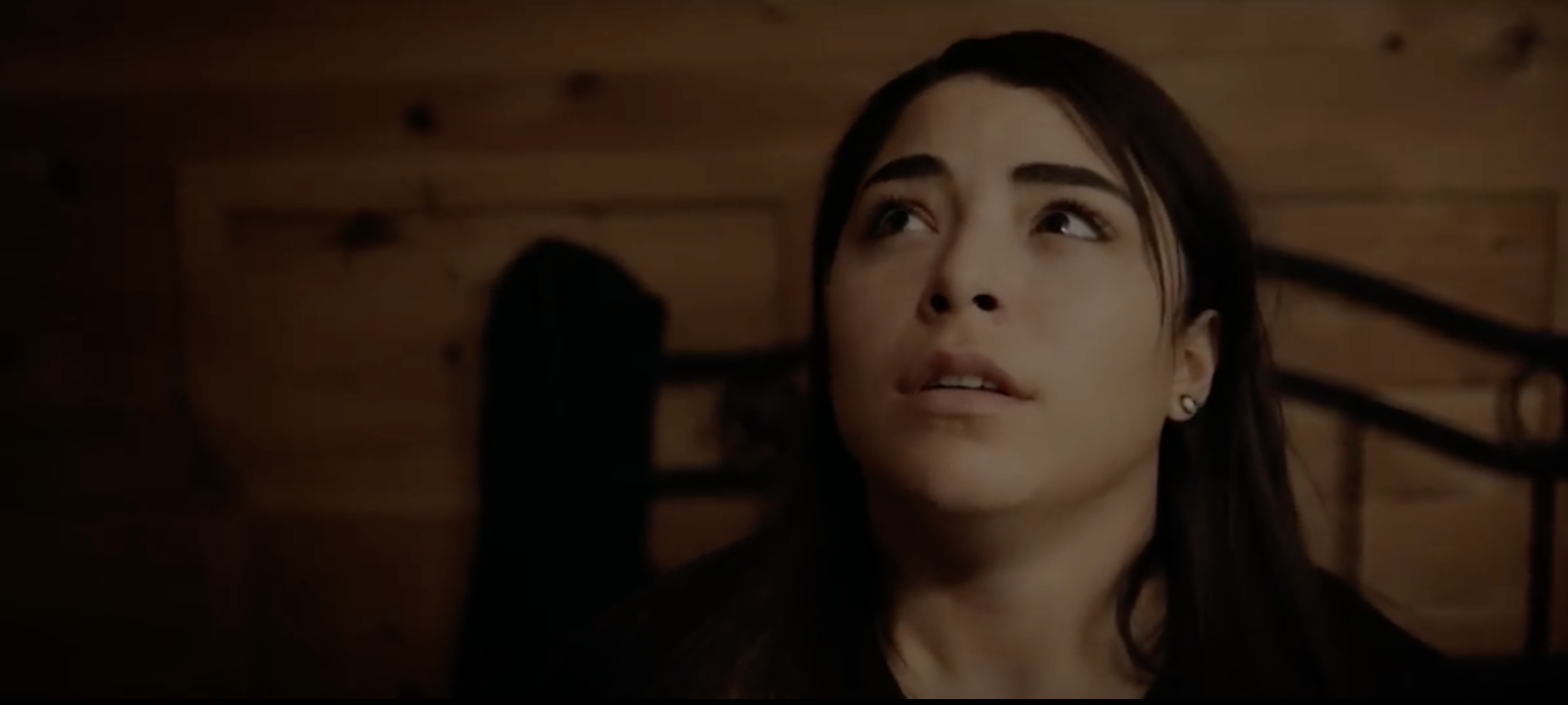After watching Adam MacDonald’s 2014 feature film debut, Backcountry, I was left with a sense of hope for the budding director. Dynamic camerawork, well-allocated sound, and impressive performances from his actors emphatically coalesced to conjure a sincere sense of horror, even if it did occasionally succumb to worn-out tropes of the genre. Thus, it only made sense to follow up with his latest release, 2017’s Pyewacket, which serves as a showcase for his undeniable talents as a filmmaker, albeit at the expense of the film’s cohesiveness.
The opening shot in the woods is reminiscent of Backcountry, combining eerie imagery with menacing sound, which in the case of Pyewacket is a voiceover reciting an incantation, as opposed to the deafening buzzing of flies of the former (hinting at the potential death of a character). Right from the get-go, then, MacDonald solidifies his intrinsic grasp on the relationship between sight and sound, and how they can work in tandem to amplify the impact of a scene. Consequently, I now believe this to unquestionably be MacDonald’s greatest strength as a director of horror.
I had previously thought it to be the handling of his actors and the established relationships between their characters, but unfortunately it falls short of the expectations laid by Backcountry. That is not to say that these elements are poorly executed, but rather that they lack purpose in the grander scheme of things.
The strained relationship between lead character Leah (Nicole Muñoz) and her mother (Laurie Holden) is admittedly well conceived and believable, as they are both troubled by the loss of Leah’s father, who was the glue that held them together. The stress on their relationship, particularly after Leah’s forced move to a more secluded home, leads to Leah summoning the pyewacket, bringing about a series of insidious events that put Leah and those around her in danger.
Where MacDonald falls short regarding his character development, however, is with Leah’s romantic subplot. It absolutely makes sense to depict a burgeoning romance between Leah and a fellow student given her tragic backstory, but it nonetheless comes off as unavoidably half-baked, lacking any real sense of purpose or place in the narrative, and unlike Backcountry, it does little to add any further tension.
This dichotomy persists with Pyewacket’s horror elements also. MacDonald is gifted at generating tension practically out of thin air, using his camera to tease potential danger in even the simplest of tasks. When there is truly something amiss then, there can be an intimate intensity to the cinematography that reels me in, seldom letting go.
But then MacDonald tries to mimic the technique used by Spielberg in Jaws, whereby the malevolent entity is kept out of sight for the vast majority of the picture, only to sheer disappointment on the Canadian director’s part when the pyewacket is actually revealed.
While MacDonald does a wonderful job of gradually amping up the creepy atmosphere, Spielberg’s technique worked because the pay-off was worth it, revealing a horrifying creature of the sea whose image still resonates some 40 years later. On the other hand, MacDonald’s pyewacket, when it is not depicted as a mere shadow, feels like nothing more than an uninspired cross between The Ring’s Samara and The Grudge’s Kayako Saeki. Pair this with the uninspired parameters through which the pyewacket exists (“Pyewacket can take many forms, so don’t trust your lying eyes”), and you are left with a supposed source of threat that is as underdeveloped as Pyewacket’s teen romance.
Although I ultimately found Backcountry to be a better-conceived effort by MacDonald, the director shows more resistance to the temptation of cliché in Pyewacket, and has certainly come along as a technical filmmaker. So while it is certainly flawed, it is nonetheless a tentative step in the right direction, maintaining the promise of Adam MacDonald’s artistic trajectory.
![]()
![]()
![]()
![]()
![]()
![]()
![]()
![]()
![]()
![]()

